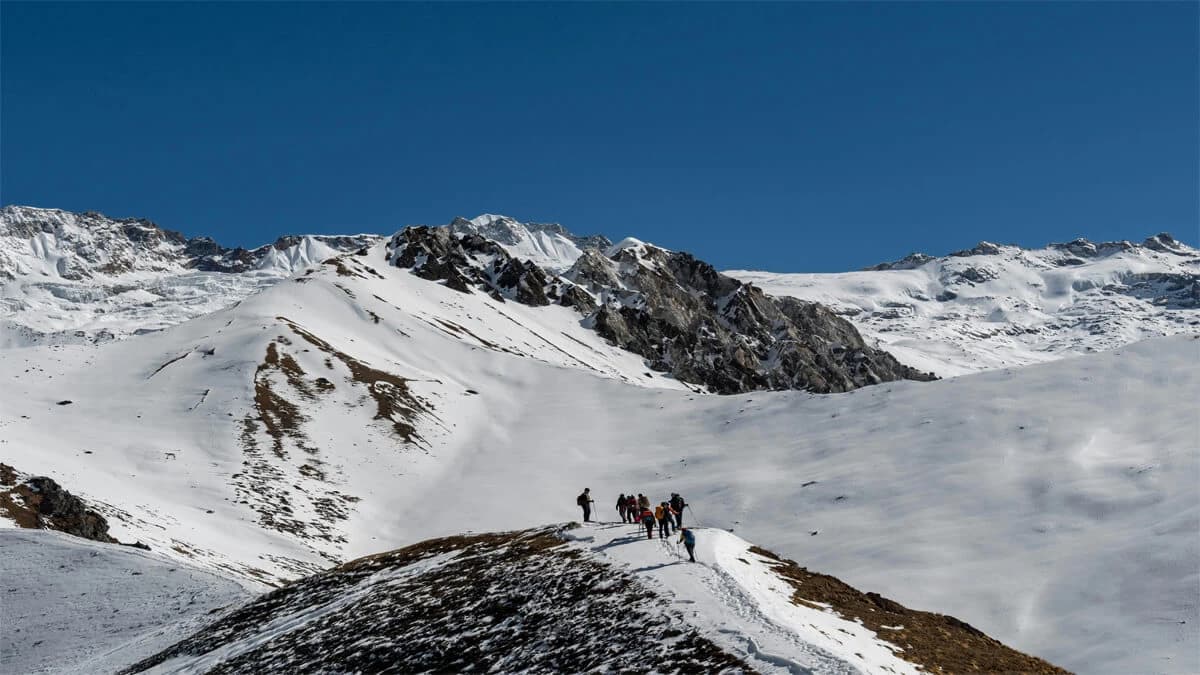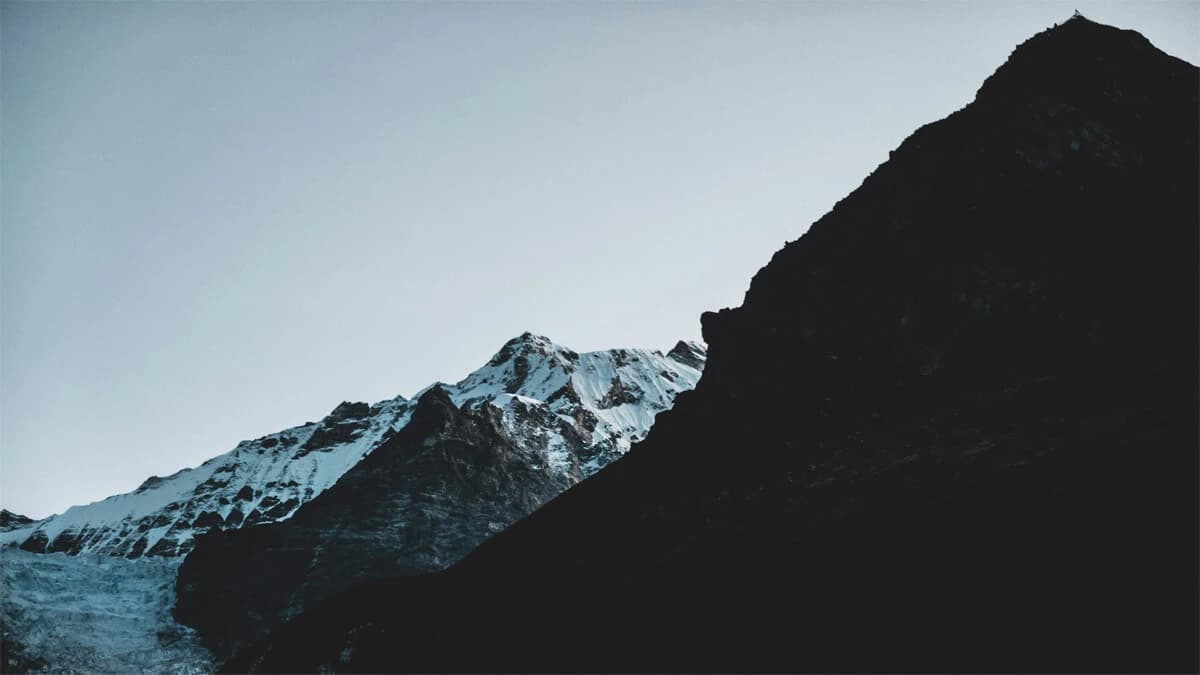Paldor Peak Climbing Highlights
- Langtang Valley trekking plus peak climbing
- 5,500m+ Peak climbing
- Biodiversity Langtang Valley region
- Eco-diversity of Langtang National Park
- Astounding view of Mt. Machhapuchhre (6,993m), Mt. Shishapangma (8,027m)Annapurna (8,091m), Manaslu (8,163m), Langtang Lirung (7,234m), Langtang Ri (7,205m), Dorje Lakpa (6,966m) and Leonpo Gang (6,979m)
- Customizable package
- Non-technical peak, which the beginners can also ascend
Paldor Peak Climbing Overview
One of the NMA “B” peaks, Paldor Peak (5,896 m) lies at the Southeast end of Ganesh Himal (7,422 m). It is located at the center of Tiru and Kapru Danda. Paldor Peak climbing is historically important because it is one of the first climbed peaks in Nepal. It was first climbed by Bill Tilman, Peter Lloyd, Tenzing Sherpa, and Da Namgyal in 1949 during monsoon season. You know Bill Tilman was one of the great adventure writers and explorers of the Himalayas. He was one of the first persons to receive trekking permits in Nepal. In his respect, there is Tilman Pass (5,308mn) that connects Rolwaling Valley with the Langtang Helmbu Circuit Trek route.
The popularity of Paldor Peak climbing came into the limelight because it lies en route to the Great Himalayan Trail (1,700 km). Gatlang Village is the transition between the Langtang Valley trek and the Ruby Valley trek. Doing this trip is a lifelong experience of nature and culture. The major inhabitants of this region are from Sherpa and Tamang ethnic communities. They are highly influenced by the Tibetan Buddhist lifestyle and socio-cultural practices. Therefore, the ancient monasteries, chortens, and mani walls beautified by the colorful prayer flags and wheels appear more vibrant.
Langtang Valley Paldor Peak climbing rewards you with the unique traditional practice of Shamanism. The Tamang Shamanism is a traditional method of healing the diseased people by connecting their souls with the spiritual world. Guerrilla trekking is popular for Magar Shamanic culture whereas Langtang Valley trek is an abode of Tamang Shamanic culture.
Natural Beauty of Paldor Peak
Doing Nepal trekking plus peak climbing in Nepal rewards you with the amazing mixture of nature and culture. The sight of Mt. Machhapuchhre (6,993 m), Mt. Shishapangma (8,027 m), Annapurna (8,091 m), Manaslu (8,163 m), Langtang Lirung (7,234 m), Langtang Ri (7,205 m), Dorje Lakpa (6,966 m), Leonpo Gang (6,979 m) and many more is incredible! The ecological diversity of Langtang National Park is equally thrilling. A large variety of flora and fauna of this first Himalayan conservation area and the fourth protected zone of Nepal welcome you to their vicinity.
The entire national park premise is covered by pine, fir, birch, hemlock, and rhododendron forests. Out of 30 rhododendron species of Nepal, 25 are found in this protected area. It means doing Paldor Peak climbing in spring serves you with the most colorful forests due to blossoming rhododendron flowers.
Paldor Peak climbing takes you through this conserved area extended from upper tropical forests to alpine scrub and perennial ice. Different bird species like the Himalayan Pheasant, the national bird of Nepal, and different sub-species of partridges can be seen here. Likewise, the Himalayan animal species like snow leopard, red pandas, Himalayan black bear, etc. play hide-and-seek with you throughout the trip.
Peak Climbing Difficulty in Nepal
You can reach the Paldor Peak Summit from the Northeast, Southeast, west, and Southwest ridges. However, the Southeast ridge route is most often used for Paldor Peak climbing. The height of Paldor Peak (5,896 m) is not a factor contributing to Paldor Peak's climbing difficulty. However, it is considered to be challenging for some reasons like the last section of the route, weather, altitude, and climbing experience you have.
The Paldor Peak climbing route runs through the rugged trails inside Langtang National Park. You have to walk through the steep uphill and downhill trails for about 6/7 hours per day. As soon as you reach higher than 2,500 m, there is always a chance for altitude sickness. The weather of the Himalayas cannot easily be predicted as it keeps changing in no time. Sometimes, you have to hold the climbing from High Camp to the Summit. Thus, there is the provision of contingency day. Doing this Peak climbing in winter and summer is more difficult than in spring and autumn.
Being it a peak requiring the good knowledge of using climbing gears and techniques to beat the hardships, Paldor Peak's climbing difficulty is not a matter of negligence. Since you have to go across some crevasses from High Camp to the summit in the dark with the help of just a head torch, it is rather difficult.
Next, it is a combination of teahouse and camping trekking because there are not any such stops between Lari Village and Somdang Village. Here, you don’t have any choice for food and accommodation services. You have to compromise with the luxury even though you can afford them. After all, trekking in Nepal or peak climbing is all about forgoing the luxury that you can regain after you get the lifelong experience, right? To beat the challenges contributing to Paldor Peak's climbing difficulty, book this trip with Nepal Trekking Routes!
Peak Climbing Cost in Nepal
To know about the overall Paldor Peak climbing cost, let’s break down the headings you have to pay for. First, you need three permits: a TIMS Card, a Langtang National Park Entry Permit, and a Paldor Peak climbing Permit. For a TIMS Card, you have to pay USD 20 per person whereas the Langtang National Park Entry Permit cost is USD 30 + 13% VAT. Paldor Peak climbing permit cost is different in different seasons. In spring, it is USD 250 as this is the peak season in Nepal. Likewise, you have to pay USD 125 in autumn while only USD 70 in summer and winter. It means Paldor Peak climbing cost differs in different seasons.
As this is teahouse + camping trekking in Nepal, you have to manage considerably a large group by paying their fees. Talking about the incentives to your porter and the guide, there is not any hard and fast rule of Nepal Trekking Routes. However, the cost of food and accommodation is low as you don’t have much choice! The typical Nepali food items are found in most of the overnight stops which are not only cheap but also hygienic.
The overall Paldor Peak climbing cost is lower than climbing other trekking peaks of the Annapurna and Everest regions. It is because you don’t have to use domestic flights before and after this trip. It means nearly USD 500 has to be saved from the overall cost. Regarding climbing gear costs, you can hire some of them while purchasing the others. Nepal Trekking Routes helps you in both purchasing and hiring them at the most reasonable cost.



